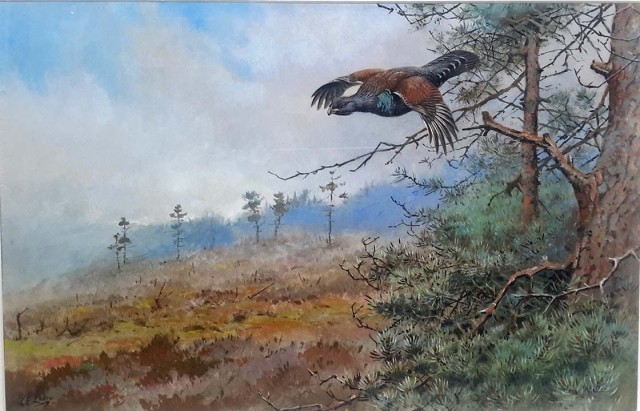George Edward Lodge was born at Scrivelsby, Lincolnshire. Lodge was educated at home, and became an accomplished taxidermist. He travelled abroad in search of birds and sport, visiting Norway, Sweden, the West Indies and the United States. He was, however, most at home in the Scottish Highlands.
He attended Lincoln School of Art and then worked in London before moving in later life to Camberley, Surrey.
One of the earliest works for which he made illustrations was Lord Lilford’s Birds of Northamptonshire in conjunction with Archibald Thorburn, whose skill as a bird-artist Lodge greatly admired. Lodge was also an expert at woodcuts, in which craft he contributed to books by Henry Seebohm and Badminton Library. His illustrations appeared in Beebe’s Monograph of the Pheasants and Eliot Howard’s Introduction to Bird Behaviour (1929).
Lodge took an active part in the conservation of wild life. He served for many years on the executive council of the Society for the Promotion of Nature Reserves and was also an active member of the International Committee for Bird Protection In 1945 he was elected Vice-President of the British Ornithologists' Union, the first artist to be so honoured.
The author of his obituary in The Times wrote:
‘A man of most exceptional charm and distinction, [Lodge] was recognized on both sides of the Atlantic as one of the finest bird-artists this country has ever produced. His wide experience in falconry doubtless gave him special knowledge of the hawk family, for he was a keen falconer from his earliest days. In the painting of birds of prey he had no rival in any country. He was primarily an artist but, being a good naturalist as well, he was able to depict his subjects among their natural surroundings and to make them look alive.’
An exhibition of Lodge's work, to mark the 150th anniversary of his birth, was held at Nature in Art Gloucester, from 30 March–9 May 2010.
